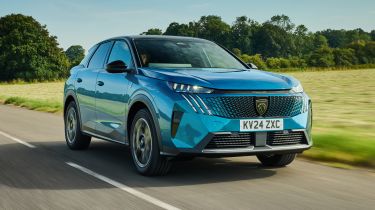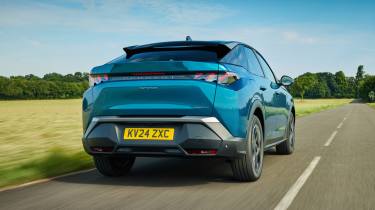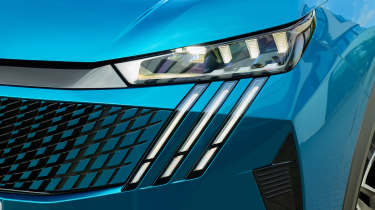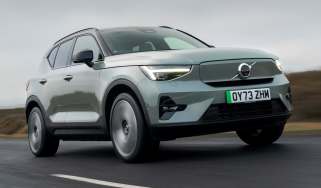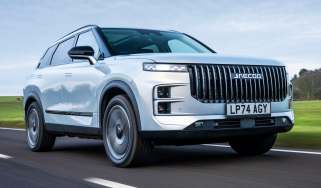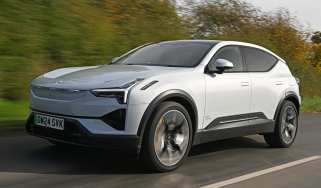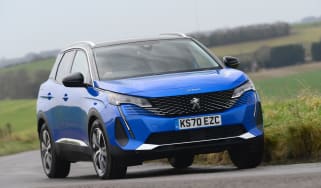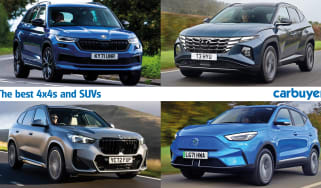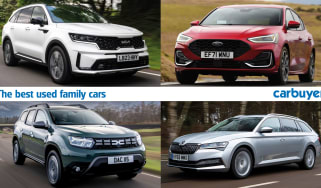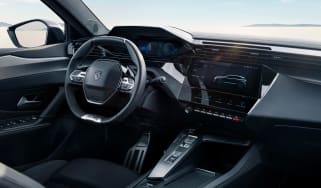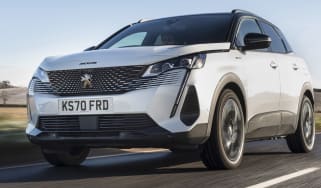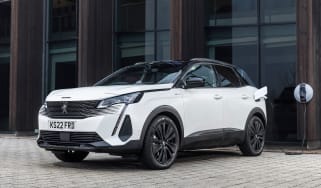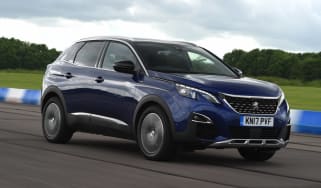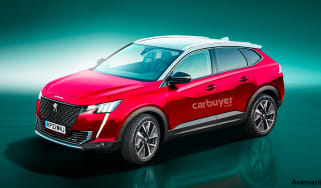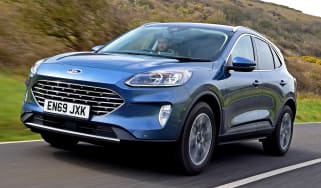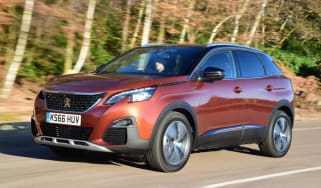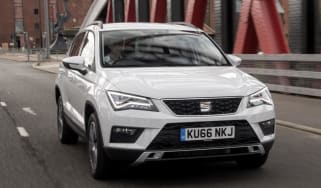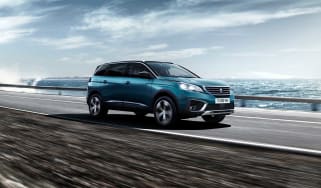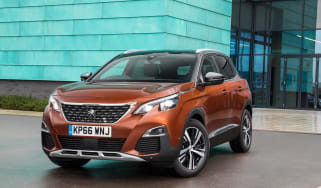Peugeot 3008 review – sleek petrol hybrid undercuts the EV, still pricey
“The Peugeot 3008 now gets mild and plug-in hybrid options bringing down the price, but this stylish SUV could still be a family SUV you buy with your heart instead of your head”
Pros
- Arresting looks
- Upmarket interior
- 55-mile PHEV range
Cons
- Pricey to buy
- Firm ride
- Infotainment can be fiddly
Verdict – is the Peugeot 3008 a good car?
The arrival of petrol hybrid and plug-in hybrids broadens the pool of buyers the Peugeot 3008 range will appeal to, arriving slightly after the all-electric Peugeot E-3008. It has a unique and desirable design, both inside and out, with headline features like a 21-inch curved display no matter the trim level. Even the entry-level mild-hybrid is pricier than some fully-hybrid rivals, though, which could make the 3008 tricky to justify unless it’s offered on tempting finance deals.
Peugeot 3008 models, specs and alternatives
While we’ve got used to manufacturers launching the electric version of a car down the line, Peugeot took the opposite approach here, launching the zero-emissions Peugeot E-3008 first, quickly followed by the petrol hybrid 3008 we’re doing a deep dive on in this review.
In any case you get a mid-size SUV with swoopy looks and five seats, but the petrol 3008 is more affordable to buy outright, costing from just under £36,000 – that’s £10k less than the E-3008. Pick the plug-in hybrid and it sits somewhere in the middle with a starting price of just over £40k. Rival brand Renault offers both the cheaper Symbioz and slightly pricier Austral, while numerous other contenders include the likes of the Hyundai Tucson, Skoda Karoq, Nissan Qashqai and Ford Kuga.
There are just two engine choices in the petrol 3008, so making a decision should be fairly easy once you’ve picked the car itself. The ‘self-charging Hybrid’ is fitted with a 1.2-litre petrol engine and a small electric motor that can only propel the car at low speeds and for short bursts, but does a good job of assisting the combustion engine to make it more efficient. It can manage up to 52.5mpg and emits 122-143g/km of CO2.
More reviews
The plug-in hybrid gets a larger 1.6-litre petrol engine, a more potent electric motor and a far larger 21kWh battery pack, so it can travel for up to 55 miles on electricity alone. This cuts CO2 emissions to 18-30g/km and power is increased to 192bhp for a 0-62mph dash that’s over two seconds faster than the entry-level version.
Both come in Allure trim as standard, but can be upgraded to GT. The former isn’t badly equipped at all, with a 21-inch ‘panoramic curved display’, dual-zone climate control, keyless entry and 19-inch alloy wheels. Upgrading brings 20-inch alloys, adaptive Pixel LED headlights, adaptive cruise control that can bring the car to a halt and set off again in traffic, and styling changes like a Black Diamond roof and 3D LED rear ‘Claw Effect’ lights.
| Trim levels | Power options |
|
|
MPG, running costs & CO2 emissions
Despite only being a mild hybrid the entry-level Peugeot 3008 can top 50mpg, so it competes with diesel and fully hybrid models for efficiency. Step up to the Plug-in Hybrid and a 55-mile electric range makes a big difference, and should cover off most daily trips. Read more about the Peugeot 3008’s MPG, running costs & CO2 emissions…
Engines, drive & performance
Compared with the electric E-3008, the mild-hybrid version feels a bit lacking in go to start with, but it’s not a bad performer once up and running, while its softer ride is very welcome. We’ve not driven the PHEV yet, but it should slot between the two for performance. Every 3008 comes with an automatic gearbox, so it’s easy to drive around town, but not quite as fun as we’d hoped on a country road. Read more about the Peugeot 3008’s engines, drive & performance…
Interior & comfort
Along with its stylish exterior, we suspect lots of 3008 buyers will take the plunge thanks to its appealing interior design. Peugeot has been on a roll with cabin styling, and while not everyone is a fan of its quirky i-Cockpit layout, the addition of a curved 21-inch screen makes it an impressive evolution. Ride comfort is on the firm side, but elsewhere the 3008 is pretty refined. Read more about the Peugeot 3008’s interior & comfort…
Boot space, practicality & dimensions
It might have a coupe-style sloping roof, but the 3008 is actually surprisingly good on the practicality front. Its boot is bigger than the Nissan Qashqai’s and its interior is pretty well thought out for passengers. Read more about the Peugeot 3008’s boot space, practicality & dimensions…
Reliability & safety
There’s some good news here too, because Peugeot has elevated itself to sixth place in our latest Driver Power survey of owner satisfaction. Euro NCAP hasn’t released a safety score yet, but Peugeot models tend to do well here, and the 3008 is loaded with a long list of modern safety kit. Read more about the Peugeot 3008’s reliability & safety…
Peugeot 3008 alternatives
There is certainly no shortage of rivals in this class, so you’ll want to do your homework before taking the plunge. Both hybrid mid-size SUV and fully-electric alternatives are available, often with strong incentives and cheap finance or leasing deals.
Mid-size SUVs
Electric mid-size SUVs
Should you buy a Peugeot 3008?
The Peugeot 3008 enters into one of the most hotly-fought classes in the UK, as the mid-size SUV replaces the family hatchback or saloon as the car most families aspire to owning.
Unlike some popular picks like the Ford Kuga and Skoda Karoq, Peugeot has really set out its stall as offering something design-led and different from the norm. The upsides of this are a really eye-catching exterior and lavishly trimmed interior, with some touches that are sure to wow buyers in the showroom.
The downside is largely the price, because even the entry-level 3008 Hybrid in Allure trim is currently more than £5,000 more expensive than the similarly-sized Renault Symbioz, while that car also boasts a full-hybrid engine and superior efficiency.
Less weight and smaller wheels seemed to have improved the 3008’s ride quality – a bugbear of the E-3008 we tested – but it still doesn’t offer much in the way of feedback or enjoyment for the driver. At least it’s surprisingly practical, with one of the biggest boots in its class and plenty of interior space, despite its rakish looks.
What is the best Peugeot 3008 for low running costs?
If it fits your budget, the 3008 PHEV should be able to reduce your motoring bills. Its large battery means many drivers will effectively have an electric car for most trips, only troubling the petrol tank when they need to go further afield. Its low CO2 emissions will also net small Benefit-in-Kind bills, although at 8%, these will still be higher than for the E-3008 in the 2% bracket.
What is the Carbuyer pick of the Peugeot 3008 range?
The Peugeot 3008 is a relatively pricey proposition in any spec, so we’d stick to the most affordable 3008 Hybrid in Allure trim for the best value. Owners will hardly be slumming it, because even Allure boasts some pretty high-end features, with GT really just adding some extra bells and whistles on top.
How we tested the Peugeot 3008
We got behind the wheel of the Peugeot 3008 in August 2024 on a mixture of British roads and in mild weather conditions.
Visit our sister site Auto Express for an alternative view on the Peugeot 3008
Which Is Best?
Cheapest
- Name1.2 Hybrid 145 Allure 5dr e-DSC6 [NI]
- Gearbox typeSemi-auto
- RRP£37,710
Most Economical
- Name1.6 Plug-in Hybrid 195 Allure 5dr Auto
- Gearbox typeSemi-auto
- RRP£40,750
Fastest
- Name1.6 Plug-in Hybrid 195 Allure 5dr Auto
- Gearbox typeSemi-auto
- RRP£40,750
